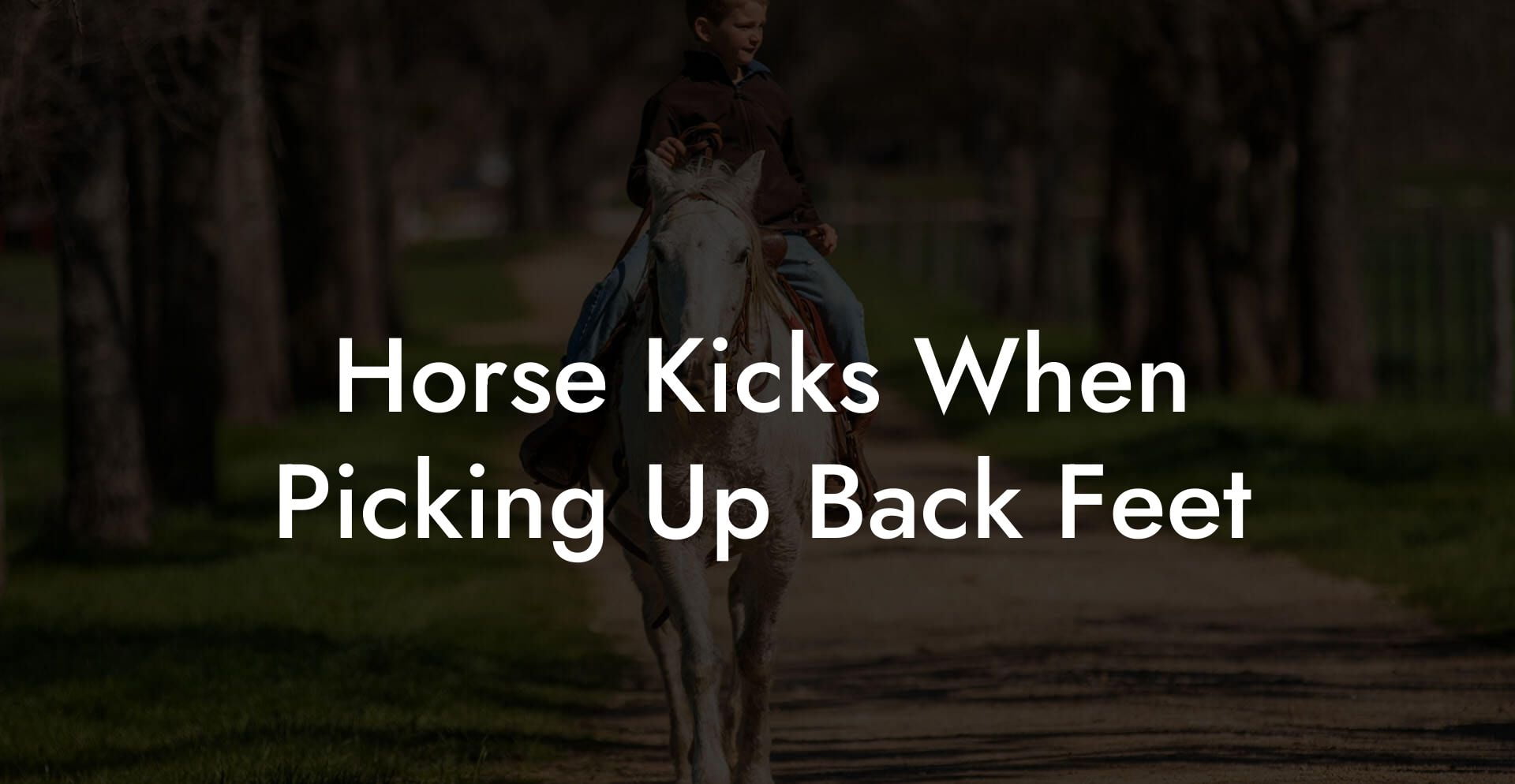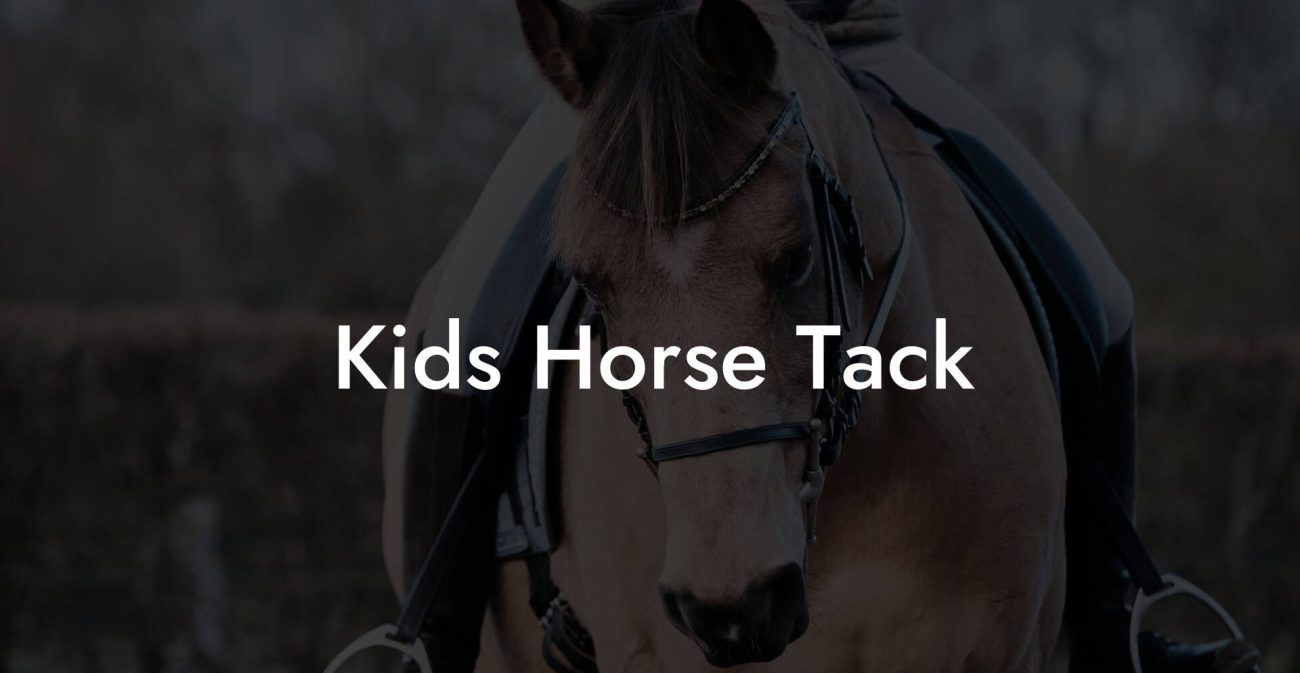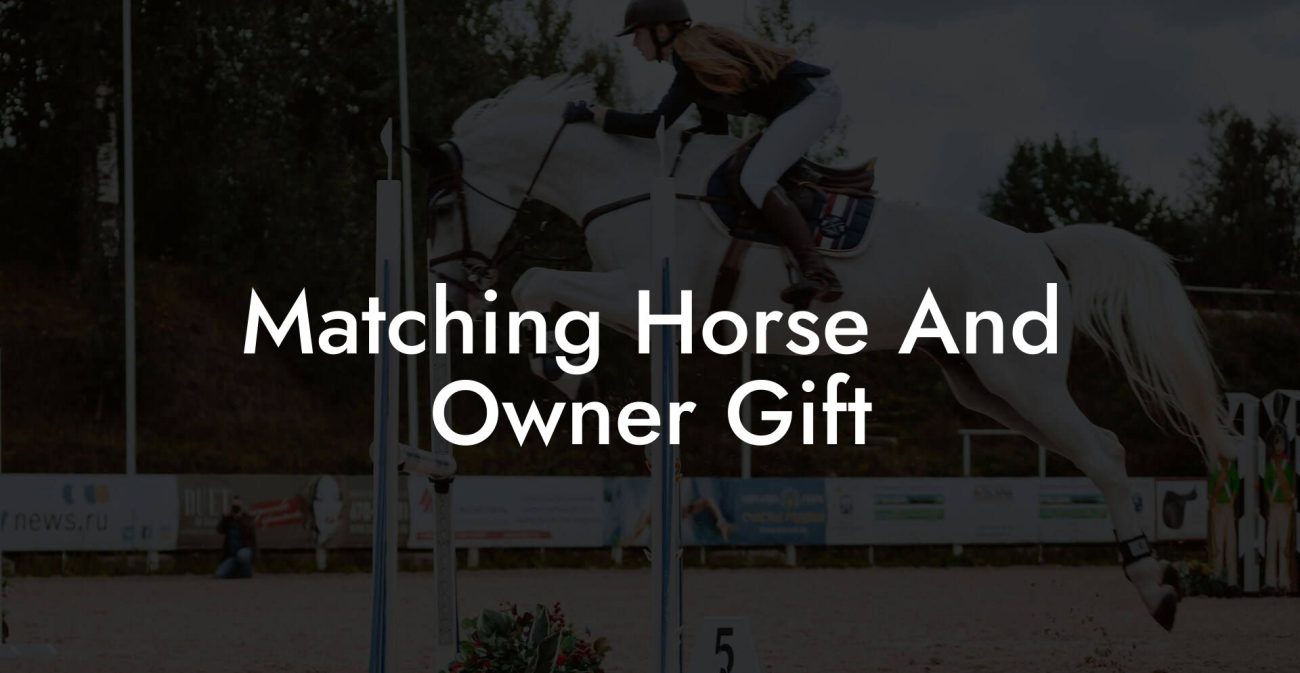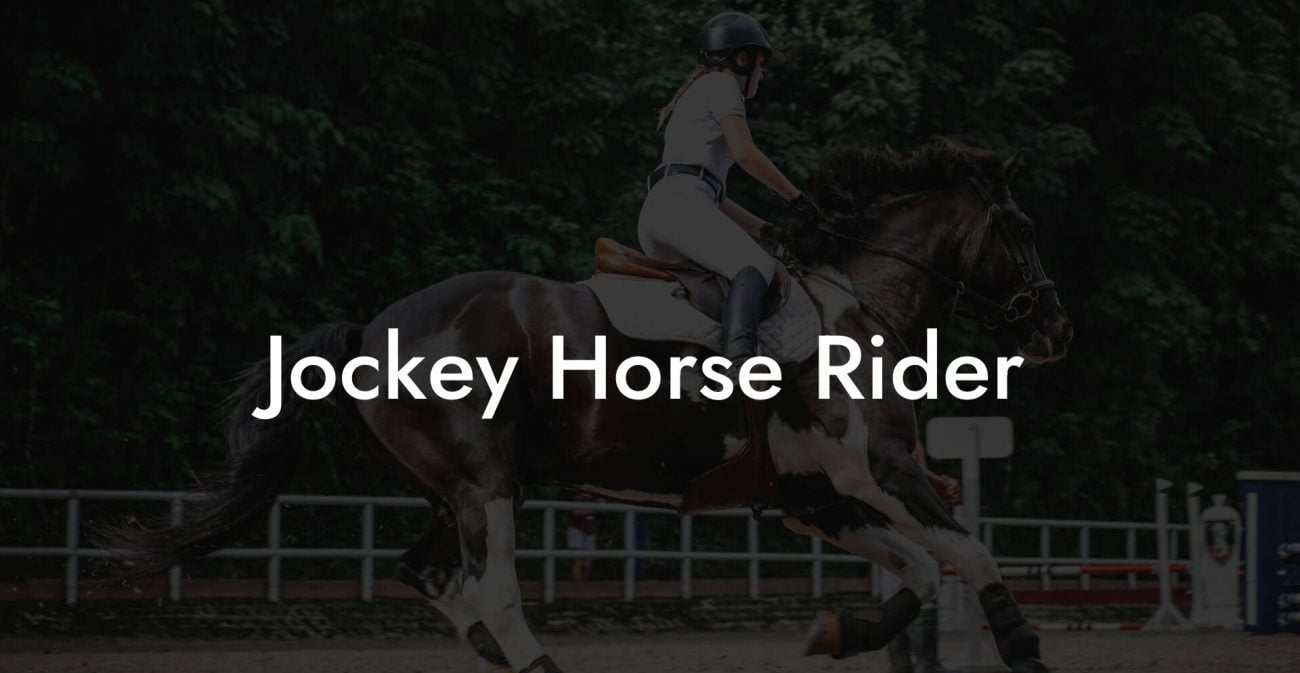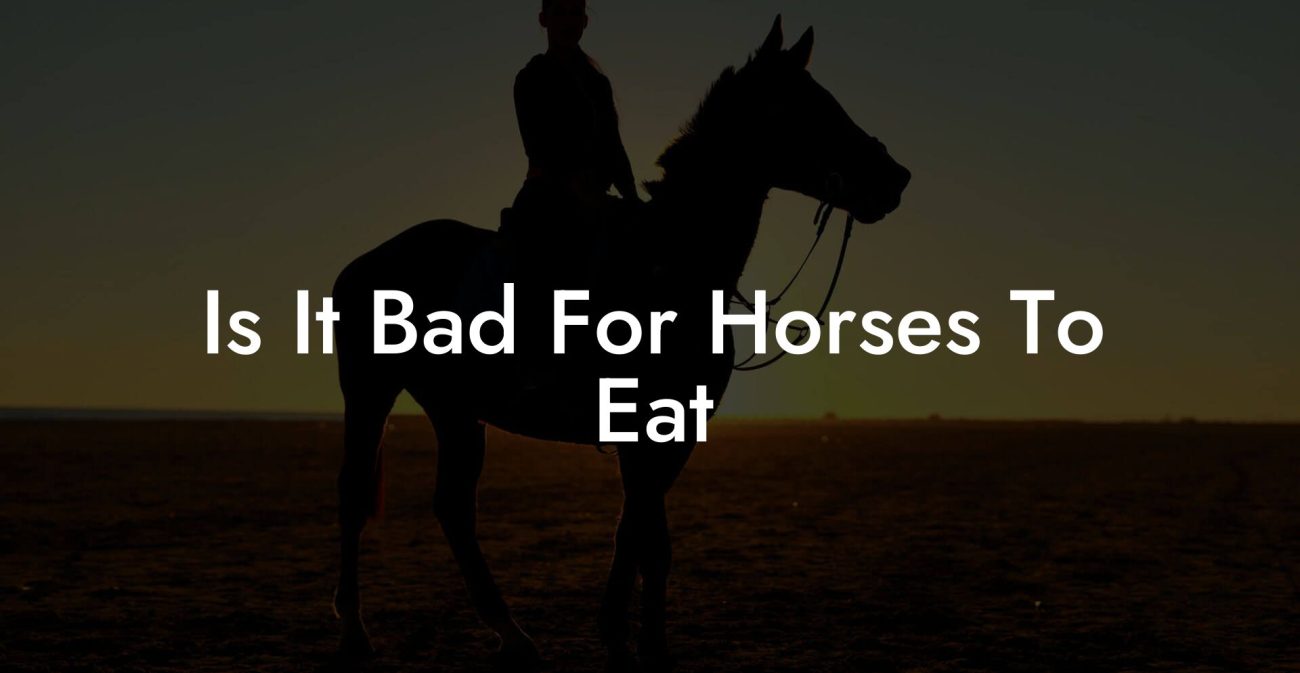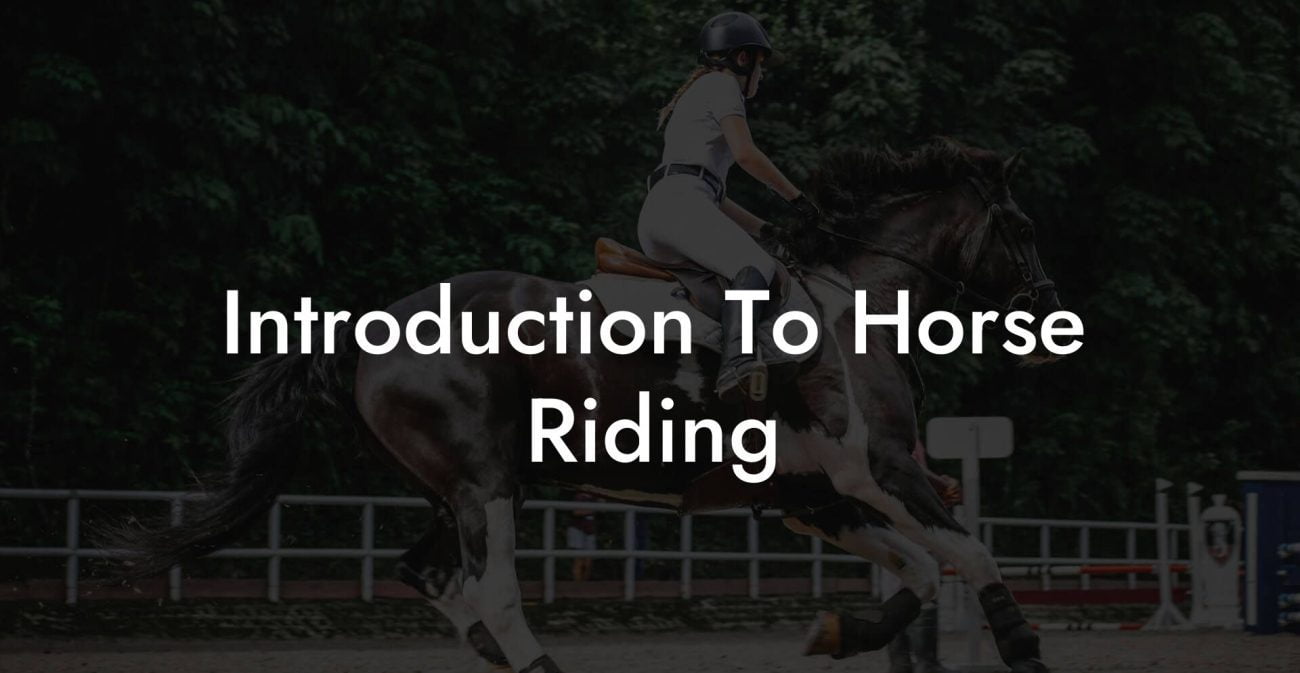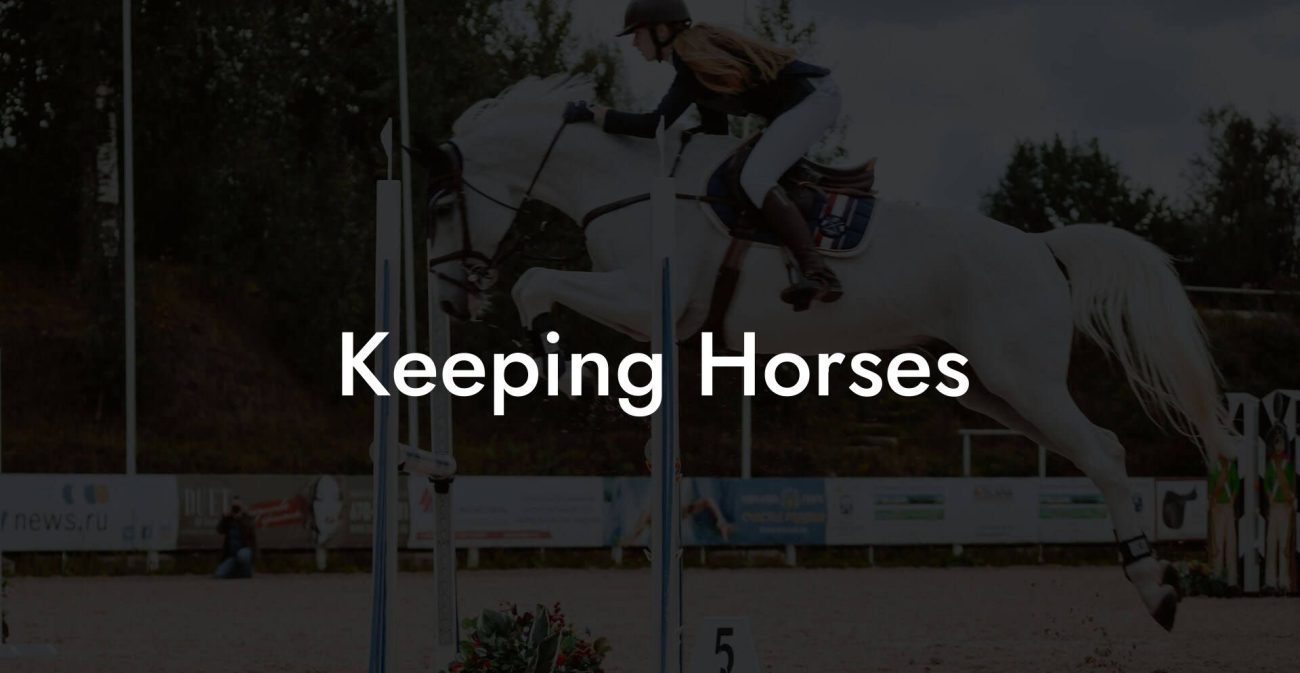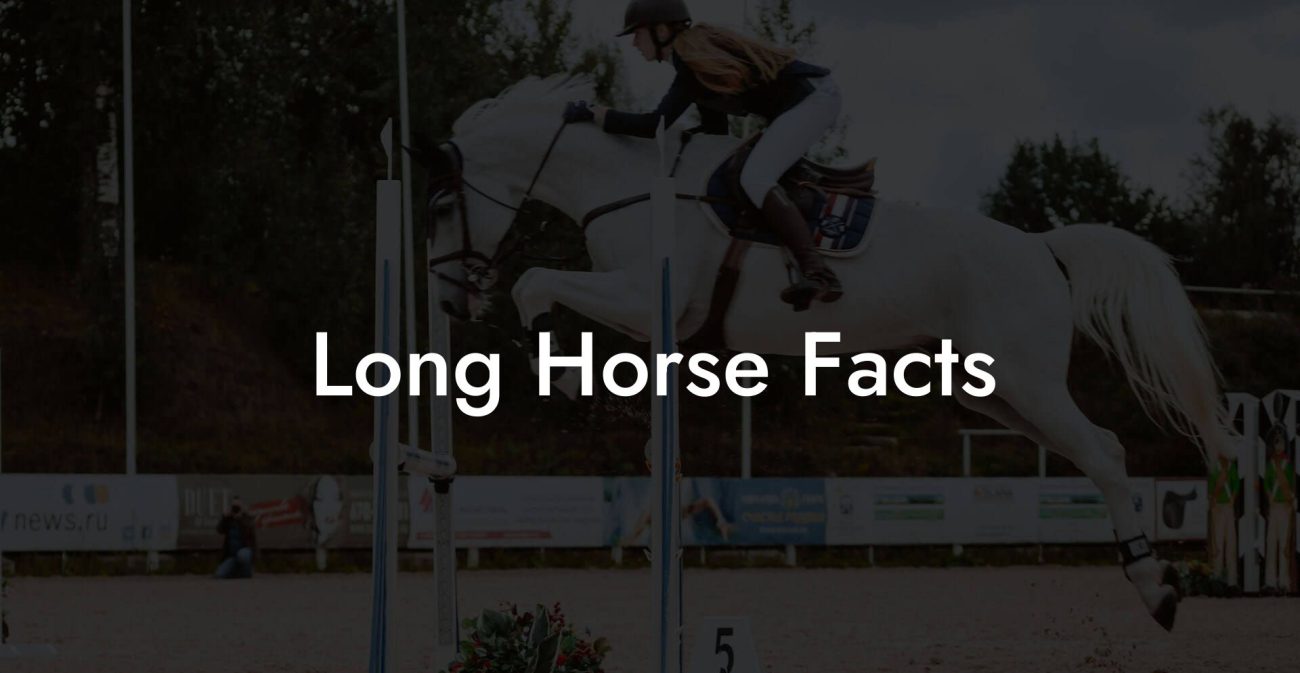Picture this: You’re out in the barn, sun streaming through the dusty windows, and you lean down to pick up your horse’s back feet for a much-needed hoof cleaning. Suddenly, your equine friend decides that this isn’t just any ordinary moment – it’s time for a dramatic kick, like they’re auditioning for a rodeo show. If you’ve ever wondered why your horse might suddenly turn a simple task into an impromptu dance number, you’re in the right place. In this comprehensive guide, we’re diving deep into the wild world of horse behavior, especially when it comes to that notorious kick when picking up back feet. Buckle up, because we’re about to gallop through equine psychology, safety tips, training techniques, and everything in between.
Quick Links to Useful Sections
- Understanding the Phenomenon: Why Do Horses Kick When You Pick Up Their Back Feet?
- The Equine Anatomy and Instincts Behind the Kick
- Behavioral Factors and Communication in Horses
- Practical Tips for Handling Horses Safely During Hoof Care
- Stay Calm and Confident
- Master the Art of Proper Restraint
- Gradual Desensitization
- Use Distraction Techniques
- Leverage the Right Tools
- Risks of Improper Handling and How to Avoid Them
- Injury Risks for the Handler
- Stress and Anxiety in Horses
- Long-Term Behavioral Problems
- Training Techniques to Prevent Kicking During Hoof Care
- Establish a Routine
- Incorporate Clicker Training
- Desensitization Drills
- Partner Work and Peer Modeling
- Advanced Strategies: Holistic Equine Health and Behavior Management
- Incorporating Equine Massage Therapy
- Utilizing Herbal Remedies and Nutritional Support
- Mindfulness and Stress Reduction for Both Horse and Handler
- Establishing a Feedback Loop with a Professional
- Case Studies: Real-Life Stories of Transformation in Equine Handling
- Case Study 1: From Defensive Kicks to Calmer Moments
- Case Study 2: Transforming an Anxious Horse’s Experience
- Case Study 3: Bridging the Communication Gap
- Common Questions About Handling Horse Back Feet and Kicking Behavior
- Why Does My Horse Kick When I Lift Its Back Feet?
- How Can I Prevent My Horse from Kicking During Routine Grooming?
- Are There Specific Tools or Equipment That Can Help?
- What Are the Long-Term Benefits of Using a Holistic Approach?
- Equine First-Aid and Safety Tips For Unexpected Kicking Incidents
- For the Handler
- For the Horse
- Resources and Community Support: Your Next Steps
- Building a Long-Term Relationship: The Journey Beyond the Kick
- Equine Behavior Myths vs. Reality: Debunking Common Misconceptions
- Your Journey to Empowered and Safe Equine Care
- Equine Care FAQs: Your Questions Answered
- The Future of Equine Care: Embracing Innovation and Tradition
- Your Next Steps: A Recap for Confident, Compassionate Equine Handling
Understanding the Phenomenon: Why Do Horses Kick When You Pick Up Their Back Feet?
Horses are majestic, powerful, and sometimes downright unpredictable creatures. When you pick up their back feet, the sudden change in weight distribution can trigger a natural fight-or-flight response. For many horses, this instinct may manifest as a kick – a way of saying, “Hey, back off, buddy!” This behavior might be rooted in protective instincts, discomfort, or even distrust of sudden movements by their caregivers.
The key to understanding this behavior lies in recognizing that your horse’s reaction isn’t necessarily malicious. Instead, it’s a survival instinct, honed through thousands of years of evolution. In the wild, a sudden change in footing could mean danger lurks nearby. Even as domestic animals, horses retain these instincts. When you lift their back feet, you may be inadvertently mimicking the instability of a precarious situation, leading them to reflexively kick as they try to regain control.
Adding to the mix is the fact that horses communicate primarily through body language. A kick isn’t just a random act of defiance; it’s a signal, a form of equine expression telling you that something in the interaction isn’t sitting right with them. It could be due to discomfort in the hooves, sensitivity to touch, or simply anxiety triggered by the sudden movement.
Keywords: horse behavior, equine instincts, unexpected kick, back feet handling, equine safety
The Equine Anatomy and Instincts Behind the Kick
To fully appreciate why a horse might kick when you pick up its back feet, it’s helpful to understand a bit about equine anatomy and natural instincts. Unlike humans, horses have evolved as prey animals, and their primary mode of defense is to use their strong hindquarters as a means of quick escape – often in the form of a powerful kick. The muscles in a horse’s hind legs are built for speed and force, making them extremely effective for fending off predators.
Consider the following anatomical facts:
- Muscle Power: The hindquarters of a horse are like a coiled spring. They store tremendous energy, ready to be unleashed in a heartbeat.
- Balance and Stability: Horses rely heavily on their hind legs to maintain balance. When these feet are lifted, their sense of stability is challenged, triggering an instinctual reaction to kick and brace themselves.
- Reflex Response: A sudden, unfamiliar sensation, like having your back feet picked up, can force an immediate, reflexive response, much like a human jerks their hand away from a hot stove.
These anatomical and evolutionary factors combine to explain why even a gentle lift can result in an enthusiastic kick. It’s the horse’s way of instantly reasserting its balance and protecting itself from what it perceives as potential danger.
Keywords: equine muscles, horse hindquarters, reflex action, evolutionary instinct, equine anatomy
Behavioral Factors and Communication in Horses
Appreciating the behavioral signals and communication style of horses is paramount to preventing and managing kicking incidents. Horses are highly social animals with a rich repertoire of non-verbal communication. A kick, though sometimes startling, is a part of this dialogue.
Signs of Discomfort: Before a full-blown kick, you might notice subtler hints of unease. These include shifting weight, jittery movements, or a sudden stiffening of the body. Learning to read these signals can help you anticipate a kick before it happens.
Trust and Bonding: The relationship between you and your horse plays a huge role in their reaction. A horse that trusts you is less likely to react defensively to routine handling. Conversely, a horse that has had negative experiences may become more trigger-happy. Building trust with regular, calm interactions is key.
Environmental Influences: The setting in which the interaction occurs can influence the horse’s behavior. Horses in a crowded, noisy barn might be more anxious and prone to adverse reactions compared to those in a calm, familiar environment.
It’s all about context, understanding the situation, reading your horse’s body language, and ensuring that you’re communicating a sense of calm and safety.
Keywords: horse behavior signals, equine communication, reading horse body language, trust in horses, environmental effects on horses
Practical Tips for Handling Horses Safely During Hoof Care
So, how can you prevent your horse from giving you a show-stopping kick when you’re simply trying to do some routine maintenance? The answer lies in a mix of proper technique, environmental management, and trust-building.
Stay Calm and Confident
Horses are remarkably sensitive to human emotions. If you’re nervous or hesitant, they will pick up on that energy. Approach the situation with a cool, confident demeanor. Speak to your horse in a soft, steady tone to reassure them that everything is under control.
Master the Art of Proper Restraint
Proper restraint techniques are essential when handling a horse’s back feet. Make sure your horse is securely tied or led in an area where they feel safe and can’t easily bolt. This safety measure not only protects you but also helps the horse feel more secure.
Gradual Desensitization
Instead of a sudden grab, let your horse get used to the sensation gradually. Spend time touching and massaging their legs during grooming sessions so they learn to associate the handling with care rather than discomfort. Over time, this gradual desensitization can reduce the likelihood of a panicked kick.
Use Distraction Techniques
A well-timed treat or gentle rub can work wonders in redirecting your horse’s attention. By giving them something positive to focus on during the process, you reduce the chances of an impulsive kick. Remember, your horse is more likely to obey if they’re enjoying the moment.
Leverage the Right Tools
Equip yourself with appropriate grooming tools and hoof stands designed to minimize strain. Modern farrier tools and ergonomic equipment not only make your job easier but also help prevent the horse from feeling threatened.
With these strategies in your arsenal, you’re well on your way to mastering the delicate art of handling a horse’s back feet without triggering a reflexive kick.
Keywords: horse handling tips, safe hoof care, equine grooming techniques, mastering horse restraint, desensitization techniques
Risks of Improper Handling and How to Avoid Them
Improper handling of a horse, especially when trying to lift the back feet, can lead not only to kicks but also to potential injury for both the horse and the handler. Let’s break down some of the risks and ways to mitigate them.
Injury Risks for the Handler
A horse’s kick can be extremely powerful, capable of breaking bones or causing severe bruising. Injuries can occur if you’re caught off-guard and are not in the correct stance. Always approach the task with safety gear if needed, and ensure you have a solid footing to avoid slips and falls.
Stress and Anxiety in Horses
Every time a horse is handled roughly or unexpectedly, it can add to its stress levels. Chronic stress not only affects their overall health but can also lead to more aggressive behavior over time. It’s essential to treat each handling session as an opportunity to fortify trust rather than to enforce control through fear.
Long-Term Behavioral Problems
Repeated negative experiences, where the horse is repeatedly startled or hurt, can lead to long-term behavioral issues. A once docile horse might become increasingly difficult to manage if it starts associating all forms of handling with discomfort or fear.
To avoid these pitfalls, practice gentle, gradual techniques every time you interact with your horse. Reinforce positive behavior with rewards, and never underestimate the importance of a calm, controlled environment.
Keywords: horse injury prevention, equine stress management, proper horse handling, avoiding equine behavioral problems, safe grooming practices
Training Techniques to Prevent Kicking During Hoof Care
Training isn’t just for show-jumping or dressage, it’s an essential tool for equine management and ensuring safe, cooperative handling during grooming sessions. Teaching your horse to remain calm when you pick up its back feet requires a blend of patience, consistency, and positive reinforcement.
Establish a Routine
Horses thrive on routine and predictability. By establishing a regular grooming and hoof care schedule, your horse will start to anticipate and accept each step of the process. Begin with gentle touches, progressing slowly to more invasive actions like lifting the back feet.
Incorporate Clicker Training
Clicker training is a fun and effective way to build trust and communicate with your horse. The sound of a click, paired with a reward such as a treat or praise, helps reinforce positive behavior. Use this method when your horse remains calm during hoof care sessions to condition a relaxed response.
Desensitization Drills
Implement drills that expose your horse to various grooming tools and handling techniques in a low-stress environment. Start with a soft brush, move to a hoof pick, and gradually work your way up to handling the entire leg. This step-by-step approach helps the horse acclimate to each sensation and minimizes surprises.
Partner Work and Peer Modeling
Sometimes, horses learn best by watching their peers. Arrange group grooming sessions where a calm, confidently handled horse acts as a model. This can help reduce anxiety, as horses are social animals and often take cues from each other.
By incorporating these training techniques into your daily routine, you create a win-win scenario: your horse feels secure and you’re less likely to face that dreaded kick during routine care.
Keywords: horse training techniques, desensitization drills for horses, clicker training for equines, routine grooming tips, equine peer learning
Advanced Strategies: Holistic Equine Health and Behavior Management
For those looking to take their equine care to the next level, advanced strategies that incorporate holistic health and behavior management can make all the difference. This approach not only addresses the immediate challenge of a kicking reaction but also fosters long-term wellness and partnership with your horse.
Incorporating Equine Massage Therapy
Just as you might use massage therapy to ease muscle tension in a stressed human, horses too can benefit from regular massage. Focusing on the legs, back, and shoulders can reduce overall muscle stiffness and improve circulation, making your horse more receptive to handling.
Utilizing Herbal Remedies and Nutritional Support
Believe it or not, nutrition plays a major role in equine behavior. A balanced diet rich in vitamins, minerals, and anti-inflammatory compounds can improve muscle tone and overall health. Many horse owners have had success with herbal supplements that boost calmness and reduce anxiety. Always consult with a veterinarian before introducing new supplements into your horse’s diet.
Mindfulness and Stress Reduction for Both Horse and Handler
Stress is contagious, even in horses. Practices such as mindfulness and deep breathing aren’t just for humans; they can create a calmer environment for your four-legged friend. Before starting a grooming session, take a few minutes to settle your mind, exude calm energy, and help your horse feel secure.
Establishing a Feedback Loop with a Professional
Collaborate with a professional equine behaviorist or trainer who can give you one-on-one feedback tailored to your specific situation. This kind of personalized guidance can help you fine-tune your techniques and ensure that both you and your horse are on the same page.
These advanced strategies go beyond simple tips, embracing a holistic philosophy that nurtures a deeper connection between you and your horse. With the right balance of physical care, mental calm, and nutritional support, you can transform every grooming session into an exercise in trust and mutual respect.
Keywords: advanced horse care, holistic equine management, equine massage, herbal remedies for horses, mindfulness in animal care
Case Studies: Real-Life Stories of Transformation in Equine Handling
The best way to understand the power of these techniques is to look at how they’ve helped other horse owners. Here are some real-life stories that illustrate how a balanced approach to equine care can transform everyday challenges into triumphs.
Case Study 1: From Defensive Kicks to Calmer Moments
Sarah, a young equestrian with a passion for trail riding, struggled with her horse, Thunder, who never missed an opportunity to kick when Sarah tried to pick up his back feet. After a few rough encounters that left both of them anxious, Sarah decided to enroll Thunder in a gradual desensitization program. By incorporating daily gentle massage, regular grooming sessions in a quiet environment, and using calming treats during hoof cleaning, Thunder gradually began to relax. Over the course of several months, not only did Thunder’s kicking reduce, but their bond grew stronger than ever.
Sarah now credits a carefully leveled training program and a holistic approach to their daily routine with transforming Thunder from a defensive kicker into a cooperative partner.
Case Study 2: Transforming an Anxious Horse’s Experience
Jake, a millennial horse enthusiast, found that his horse, Luna, exhibited high anxiety during routine handling, especially when her back feet were involved. After reading about mindfulness and equine nutrition, Jake implemented a series of behavioral modifications and dietary changes. He started each session with a mini meditation (for both himself and Luna), followed by a step-by-step acclimatization to hoof handling. Incorporating herbal supplements recommended by a holistic vet further calmed Luna. Within weeks, Luna was not only more accepting of the handling but became an ambassador of calm in the stable.
Jake’s success story illustrates how holistic strategies, encompassing mental, dietary, and physical techniques, can dramatically change a horse’s behavior and improve the overall quality of care.
Case Study 3: Bridging the Communication Gap
Emily, an avid animal lover, had a beautiful mare named Bella, known for her sassy kicks when anyone tried to handle her rear legs. Frustrated by Bella’s unpredictable behavior, Emily teamed up with an equine behaviorist to decode Bella’s body language. Through patience and consistent practice, Emily learned to recognize the subtle cues of discomfort that preceded a kick. With regular positive reinforcement and an environment designed to minimize stress, Bella’s behavior improved steadily. Emily now enjoys smoother grooming sessions and has even found that Bella’s general demeanor has become more relaxed in other aspects of barn life.
Each of these stories underscores one key takeaway: empathy, consistency, and a multi-faceted approach can turn challenging behavior into a foundation for trust and resilience.
Keywords: equine case studies, success stories in horse training, real-life equine transformation, holistic equine care examples, behavioral change in horses
Common Questions About Handling Horse Back Feet and Kicking Behavior
Let’s address some burning questions that many horse owners and enthusiasts have when it comes to managing the notorious kick during back feet handling.
Why Does My Horse Kick When I Lift Its Back Feet?
The act of lifting a horse’s back feet can trigger a natural reflex associated with balance and self-defense. It’s a survival instinct rooted in their evolution as prey animals. Essentially, your horse is reacting to a situation that disrupts its sense of stability.
How Can I Prevent My Horse from Kicking During Routine Grooming?
Prevention starts with building trust through gradual desensitization, using calming techniques, and ensuring that the environment is stress-free. Proper restraint, consistent handling routines, and positive reinforcement also play crucial roles.
Are There Specific Tools or Equipment That Can Help?
Absolutely. Ergonomically designed hoof stands, non-slip mats, and grooming aids specially created for equine care can reduce the chances of abrupt kicks by making the handling process smoother and safer.
What Are the Long-Term Benefits of Using a Holistic Approach?
Beyond preventing kicks, a holistic approach helps build a deeper, more trusting relationship with your horse. It improves overall equine health, reduces chronic stress, and ensures that both you and your horse enjoy a safer, more relaxed interaction every time.
Keywords: why do horses kick, prevent horse kicks, safe horse handling equipment, holistic benefits in equine care, FAQs on horse behavior
Equine First-Aid and Safety Tips For Unexpected Kicking Incidents
Despite your best efforts at desensitization and training, accidents happen. Here are some essential first-aid and safety tips to keep you and your horse safe if an unexpected kick occurs.
For the Handler
• Always wear protective gear if you’re working closely with your horse. Protective boots, gloves, and even a helmet can reduce injury in the event of a misdirected kick.
• Keep a first-aid kit nearby. Have antiseptics, bandages, and pain relievers within reach.
• If injured, treat the wound immediately and consult a medical professional if necessary.
For the Horse
• Check your horse for any signs of bruising or injury after an incident. A mild kick can sometimes result in hidden injuries.
• Regular veterinary check-ups and physiotherapy can help prevent or address issues resulting from kicks.
• Monitor your horse’s behavior post-incident. Prolonged stress or pain may require professional intervention.
Keywords: equine first-aid, handling safety for horses, horse injury prevention, first-aid for horse kicks, equine safety tips
Resources and Community Support: Your Next Steps
Taking care of a horse is a rewarding journey, but it’s not one you have to travel alone. Whether you’re a seasoned rider or a newcomer to equine care, the wealth of resources and supportive communities out there can help you navigate the challenges, including dealing with kicking behavior during back feet handling.
Local Equine Clubs and Workshops: Many areas host workshops on equine handling and safety, where you can learn hands-on from experienced trainers and farriers. Attending these events can provide you with practical tips, live demonstrations, and a chance to ask questions relating to your specific challenges.
Online Forums and Social Media Groups: Platforms like Facebook, Instagram, and specialized forums are bustling with millennial and Gen-Z equestrians sharing their experiences, tips, and success stories. These communities are a goldmine for advice on everything from basic grooming to advanced training techniques.
Books and E-Guides: There is a growing body of literature focusing on holistic and safe equine care. Look for books written by renowned farriers and trainers that discuss both the practical and emotional aspects of handling horses.
Consult a Professional: Sometimes the best advice comes from professionals. Don’t hesitate to reach out to a local equine behaviorist or veterinarian for personalized guidance on preventing that unwanted kick and improving your overall handling techniques.
Mobile Apps and Digital Tools: Technology can be a great ally; there are several apps designed for horse care and training that provide reminders, record progress, and connect you with a global community of horse enthusiasts.
Connecting with others not only enhances your skills but also transforms the sometimes daunting challenges of equine care into a shared adventure. Your next step? Dive into the community, share your experiences, and keep learning!
Keywords: equine care resources, horse care community, local equine workshops, online horse forums, professional equine consultation
Building a Long-Term Relationship: The Journey Beyond the Kick
The occasional kick is merely a small moment in the greater tapestry of your relationship with your horse. Every interaction, every grooming session, and every careful handling appointment contributes to a deeper bond full of mutual respect and trust. When you take the time to understand and address the reasons behind those kicks, you’re not just preventing injuries – you’re nurturing a lifelong friendship.
Think of it this way: a horse’s kick is not a rejection; it's a form of communication. By listening to your horse’s cues and adjusting your approach, you open the door to a partnership built on safety and empathy. Over time, as your horse becomes more comfortable and confident, even grooming sessions that once elicited a reaction can transform into moments of calm connection and mutual care.
Remember, every challenge is an opportunity to learn and grow together. With patience, persistence, and the right techniques, you can turn every kick into a stepping stone towards a safer, more trusting relationship.
Keywords: long-term equine relationship, building trust in horses, transforming horse behavior, empathetic horse care, journey to equine partnership
Equine Behavior Myths vs. Reality: Debunking Common Misconceptions
In the world of horse care, myths abound. Some say that a horse’s kick is simply a sign of aggression, while others might shrug it off as just a natural reflex. However, the reality is far more nuanced. Let’s debunk some of these common misconceptions:
-
Myth: A horse’s kick is an act of defiance.
Reality: More often than not, the kick is a reflexive action triggered by a loss of balance or a sudden stimulus. -
Myth: Only inexperienced handlers get kicked.
Reality: Even the most experienced equestrians can get kicked if their horse senses instability or if trust has not been firmly established. -
Myth: There’s nothing you can do to prevent a kick.
Reality: With proper training, desensitization, and a calm environment, the frequency and intensity of kicks can be markedly reduced.
Understanding these facts not only helps in safe handling but also fosters a more compassionate view of equine behavior. Every horse is unique, and recognizing the underlying causes of their actions is the first step toward resolving them.
Keywords: horse behavior myths, equine care misconceptions, debunking horse care myths, equine reality check, safe handling myths
Your Journey to Empowered and Safe Equine Care
Embracing the complexity of your horse’s behavior, especially when it comes to those unexpected kicks, is a vital part of responsible equine care. This guide isn’t just about preventing a kick; it’s about understanding the heartbeat of your horse, building trust, and cultivating a resilient relationship. Whether you’re a Gen-Z newcomer to stable life or a seasoned millennial rider, empowering yourself with this knowledge is the first step toward mastering safe and compassionate horse care.
Each grooming session, each gradual desensitization step, and every little moment you share with your horse lays the foundation for lasting trust and mutual respect. Remember: every challenge carries within it the seed of growth. With empathy, the right training techniques, and the support of a vibrant equine community, you’re well on your way to transforming that intimidating kick into a mere ripple in your journey of immense reward.
So go ahead, dive into the world of holistic equine care with confidence. Explore new training methods, join community forums, and never hesitate to reach out for professional advice. Your future self, and your four-legged friend, will thank you for it.
Keywords: empowered equine care, safe horse handling, transformational horse training, lasting equine relationships, holistic horse care journey
Equine Care FAQs: Your Questions Answered
Here are some frequently asked questions about managing kicking behavior when handling your horse’s back feet, along with actionable answers to help you on your journey.
1. Why does my horse kick when I attempt to pick up its back feet?
When you lift your horse’s back feet, its natural reflex to regain balance gets triggered. This instinct, rooted in evolutionary survival mechanisms, is an automatic reaction meant to restore stability.
2. Are kicks a sign of aggression in horses?
Not necessarily. Most kicks are reflexive responses to sudden movements or perceived instability rather than acts of deliberate aggression.
3. What safety measures can I take to avoid injury when handling my horse?
Always use proper restraint techniques, choose a calm environment, wear protective gear, and consider using ergonomic tools during grooming sessions.
4. Can gradual desensitization really help reduce kicking incidents?
Yes, by slowly acclimating your horse to the sensations associated with hoof handling and using positive reinforcement, you can significantly reduce the frequency and intensity of kicks over time.
5. How important is trust in preventing adverse reactions?
Trust is key. A horse that feels secure and understands that handling sessions are safe is far less likely to react defensively.
6. What role does the environment play in a horse’s reaction to having its back feet picked up?
A calm, familiar environment can ease a horse’s anxiety and help prevent kicking incidents, while a noisy or hectic setting may exacerbate the reaction.
7. Are there specific tools that can help minimize the risk of being kicked?
Yes, tools such as proper hoof stands, non-slip mats, and ergonomically designed grooming aids can help ensure both you and your horse remain safe during routine care.
8. How do professional trainers help in reducing the frequency of kicks?
Professional trainers use techniques such as desensitization, clicker training, and trust-building exercises that allow horses to acclimate to various handling methods gradually.
9. Where can I find community support or additional resources on equine care?
Local equine clubs, online forums, social media groups, and workshops are excellent resources to connect with other horse owners and professionals.
10. How do I know if an integrative approach to horse care is right for me?
If you’re looking for a well-rounded strategy that emphasizes trust, gradual training, and holistic health, an integrative approach might be the perfect match for you and your horse.
The Future of Equine Care: Embracing Innovation and Tradition
As technology merges with centuries-old traditions, the future of equine care is blossoming into a harmonious blend of innovation and timeless wisdom. Modern apps and biometric devices offer real-time insights into your horse’s behavior, while traditional methods like massage, herbal remedies, and steady, patient handling continue to form the backbone of equine therapy.
Imagine a world where your smartphone alerts you to subtle signs of anxiety in your horse before they become major issues, or where wearable sensors help track muscular tension during grooming sessions. These advancements, combined with well-established techniques, promise a future where every interaction with your horse is not only safer but also more fulfilling.
The best part? This isn’t a distant dream. Across the globe, innovative tools are already being integrated into everyday equine care routines. Whether you’re tech-savvy or more inclined towards traditional methods, the evolving landscape of horse care invites you to explore new possibilities while honoring time-tested practices.
Keywords: future of equine care, innovative horse technology, traditional equine therapy, modern equine management, equine wellness evolution
Your Next Steps: A Recap for Confident, Compassionate Equine Handling
As you wrap your head around the multitude of factors contributing to why horses kick when their back feet are picked up, remember that every kick is more than just a reflex, it’s an opportunity to deepen your connection with your equine companion. By adopting a holistic approach, staying informed about best practices, and integrating advanced as well as traditional techniques, you’re not only protecting yourself but also ensuring your horse feels safe, respected, and understood.
Now is the time to put these insights into practice. Start by establishing a calm and predictable handling routine, invest in proper equipment, and don’t hesitate to tap into the vast network of equine experts and communities available online and in your local area. Transform every grooming session into an exercise in mindfulness, trust, and mutual growth.
Whether you’re a Gen-Z rider just starting out or a millennial equestrian with years of experience, your journey toward safer, compassionate horse care is a rewarding one. Embrace the challenges, celebrate the milestones, and remember that every kick – even the unexpected ones – is just a part of the larger dance of life that you and your horse share.
Keywords: confident equine handling, compassionate horse care, step-by-step horse training, holistic equine practices, empowered horse care journey
Your journey to a harmonious partnership with your horse is ongoing, evolving, and filled with opportunities for learning and growth. Here’s to turning challenges into shared successes and every kick into a stepping stone toward a lifetime of trust and mutual respect.

